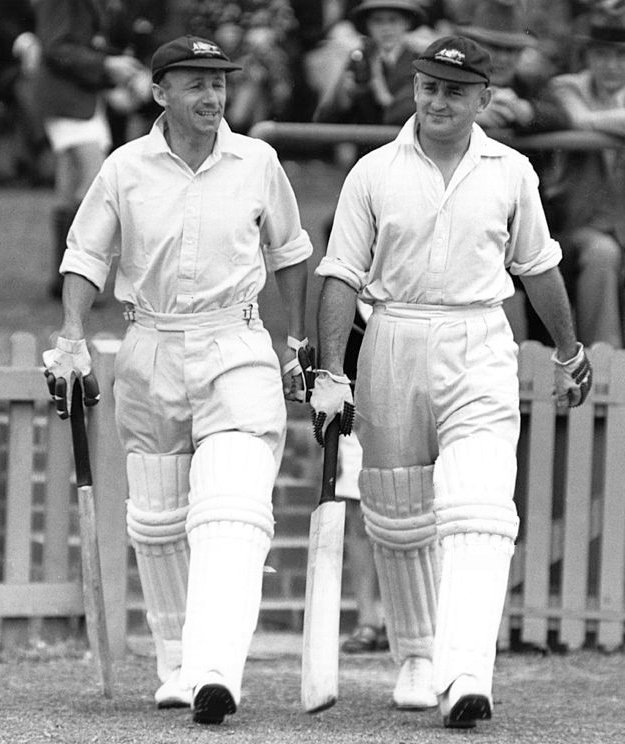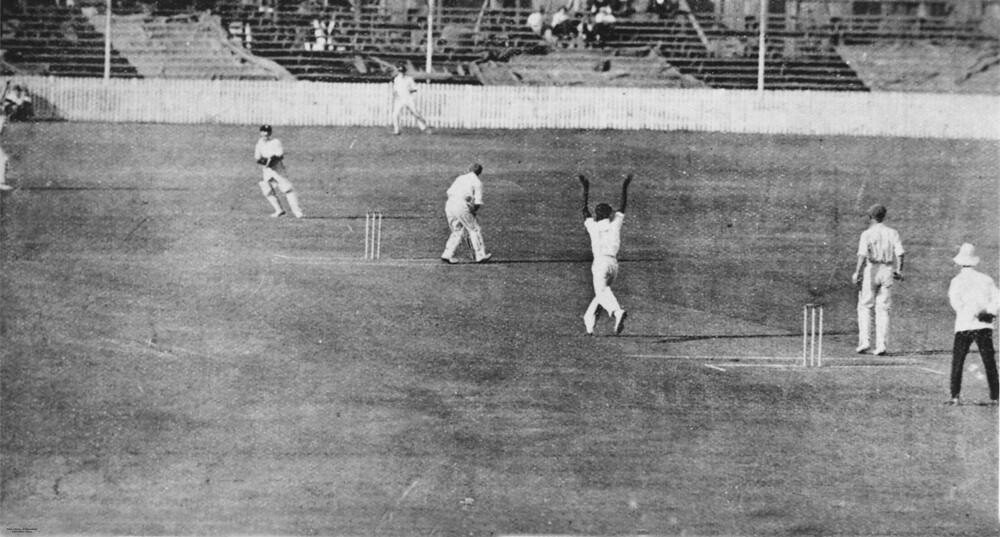Indeed, the greatest batsman ever born in the history of cricket. His figures and feats are ones with which you simply cannot argue. Don Bradman record is so far ahead of anyone else’s that one can scarcely believe one man could be so dominant through a career spanning 20 years.
Whereas most players, if not every other player but him, went through dips in form, he maintained his supremacy each year, every year. That was what really set him apart. As Wally Hammond said, Don Bradman whole career demonstrated his merciless will to win. One can only admire the mental strength he must have possessed.
As with WG Grace, it often became a match between the opposition and him. ‘He spoilt the game,’ Jack Hobbs said. He got too many runs.’ Australia lost only two series in which he played. Both were against England. The first was in 1928–29 when Don Bradman was appearing for the first time and was dropped for one game after making an innocuous debut (his response when he was recalled was to score two hundred in the remaining three games).
The second came in 1932–33 when Douglas Jardine deployed his infamous Bodyline tactics. That series represented Bradman’s most serious failure and yet he averaged 56.57! Although, that’s wasn’t true failure in other people’s books. These were the only two series in which he averaged less than 70. You’ve seen brief glimpses of footage of him batting and wondered about some of the field settings, which hardly seemed designed to slow down the scoring.
He himself has conceded that the game in those days was in some respects very different from the way it later became. When Shane Warne and Sachin Tendulkar were granted an audience with him in the 1990s. An interesting conversation ensued in which ‘The Don’ was asked how he might have fared in the modern era.
He said he would not have scored so many runs exactly because of defensive fields; in his day, fields remained attacking for far longer, even when batsmen were scoring quite freely. There was no such thing as a deep point or sweeper in those days and he also conceded that the standard of fielding was much better in the modern game.
His admission that he might have averaged nearer 70 than 100 had he played in the modern era prompted some jokes along the lines of ‘Not bad for a 90-year-old’, but his comment was perhaps a serious and revealing one. To an extent, the transformation in fielding standards supports to explain one of Bradman’s key strengths, which was the phenomenal speed of his scoring.
Don Bradman two Test triple-centuries were both scored in matches in England restricted to four days. The first one in 1930, when he brilliant scored 309 of his 334 runs in one day, including a hundred in each of the three sessions. In that series, consisting of four matches lasting four days and one (the last one) played to a finish. He scored 8, 131, 254, 1, 14, 334 and 232 for an aggregate of 974 which still stands as the record for any series, even though many series since have been played over more matches and more days.
That innings of 334 was at the time the highest ever played in a Test match and meant that he held the records in both Test and first-class cricket, having earlier that year scored an unbeaten 452 (in just under seven hours) for New South Wales against Queensland in Sydney. He was just 21 years old at the time.
His personal view was that his innings of 254, made in the second Test at Lord’s, was the best of his career. For him, though, scoring fast did not mean taking foolish risks. His method was so clinical and efficient – if not always pretty enough for some purists – that he hit few sixes and rarely hit the ball in the air (he had an unorthodox grip that did not lend itself to aerial shots).
And even if we concede that the standard of fielding was not as high then as it is now: it was the same for everyone in his time and he still stood head, shoulders and a fair bit of the body above his peers in terms of productivity. He was clearly an interesting character. Talk to the likes of Ian Chappell, who knew The Don well, and what comes back is not all sweetness and light. He appears to have been prickly and critics will call him self-centered and self-interested.
It was well known at the time that Don Bradman did not see eye to eye with several other Australian players, the Irish-Australians Bill O’Reilly and Jack Fingleton among them. When Australia – without Bradman, who was recovering from illness – happily toured South Africa under Vic Richardson in 1935–36, only for Don Bradman to be appointed captain in his place for the following winter’s series against England, it was not a popular decision with all parts of the dressing room.
But Don Bradman proved as ruthless and as successful a captain as he was a batsman, and the results brooked little argument. A classic example of his leadership style came in that 1936–37 series against England when he reversed his batting order on a rain-affected wicket so that by the time he went in, at number 7, conditions had improved, and he was able to score what proved to be a match-winning 270.
His contribution went beyond just the playing feats. He also had a role in management and was a very influential member of the Australian board. Some feel he might have done more to see that players were better remunerated in the period leading up to their decision to take Kerry Packer’s dollars, but he also played an undeniably beneficial role in eradicating ‘chucking’ and in encouraging the teams to play enterprising cricket ahead of the famous 1960–61 series between Australia and West Indies.
With a similar ambition in mind he was also instrumental in Garry Sobers, the world’s biggest drawcard, joining South Australia the following year. I met him briefly once in Adelaide on one of my early tours, a chance encounter walking round from the dressing rooms to the dining room. He was struck by how small he was, a reminder that many of the finest batsmen – Sachin Tendulkar, Brian Lara Ricky Ponting, and Sunil Gavaskar also come to mind – are not great hulks.
He was 5ft 8in tall and not powerfully built. You imagine that when you meet such a revered figure there will be a golden aura surrounding them, a great charge of energy when you shake hands, and pearls dropping from his lips when he speaks. He exuded coolness, calmness and a normality that hid the great ability and determination. One of the first cricket books I ever read, and pored over, was his masterly Art of Cricket.
While it is hard to compare different societies and different times, Bradman carried the hopes of a nation on his shoulders, just as Tendulkar did for Indians in a later era. In Bradman’s case, Australians were feeling acutely the consequences of the First World War, which had left their relationship with Britain under strain, as well as the Great Depression. Sport gave them an identity and Don Bradman provided them with their most reliable champion.
But the burden took its toll, which only makes his achievements more remarkable. Bradman himself said that his concentration was what set him apart from others. He was famously single-minded in practice as a child, using a single stump to hit a golf ball against a water tank outside the family home in Bowral in rural New South Wales where he grew up, the fifth child of a wool trader and carpenter.
He was 17 years old when he made scores of 234 and 300 for Bowral, the former against a young O’Reilly (off whose bowling he was dropped twice before reaching 50). This led to an invitation to attend a practice session at the Sydney Cricket Ground, and ultimately to an offer to play for the St George club.
 Don Bradman and Stan McCabe 1938
Don Bradman and Stan McCabe 1938In his first match for them – and his first-ever match on a turf wicket – he scored 110. A little more than a year later he was playing his first match for New South Wales and scoring another hundred. What was particularly striking was how Bradman was equal to each new challenge that was presented to him. He made a success of his first season of state cricket and his first season as a Test cricketer, despite being dropped after one game.
When doubts were expressed that he would struggle in English conditions on his first tour in 1930 his response was to hit 236 at Worcester in his first match and he went on to make 1,000 runs before the end of May. Such indeed were his powers of concentration that he was never out in the 90s in Test cricket (he scored 29 hundred).
He was surely fortunate to play in an era tailor-made for batsmen. Scoring in state cricket in Australia was huge and before Bradman had arrived on the scene Bill Ponsford twice played innings in excess of 400. Far fewer Test matches were played in those days but even so three other batsmen besides him made Test scores of more than 300 in the 1930s.
In the series in which Don Bradman made his debut, Wally Hammond topped 900 runs. Bradman therefore had plenty to aim at in terms. Just how well he succeeded can be measured by a first-class career average of 95.14 and career Test average of 99.94, which remain well ahead of all his rivals. He played at a time when big scores – huge scores – were a necessity, and Don provided them like no batsman before or since.
 Eddie Gilbert and Donald Bradman at the Woolloongabba
Eddie Gilbert and Donald Bradman at the WoolloongabbaRead More
No comments:
Post a Comment